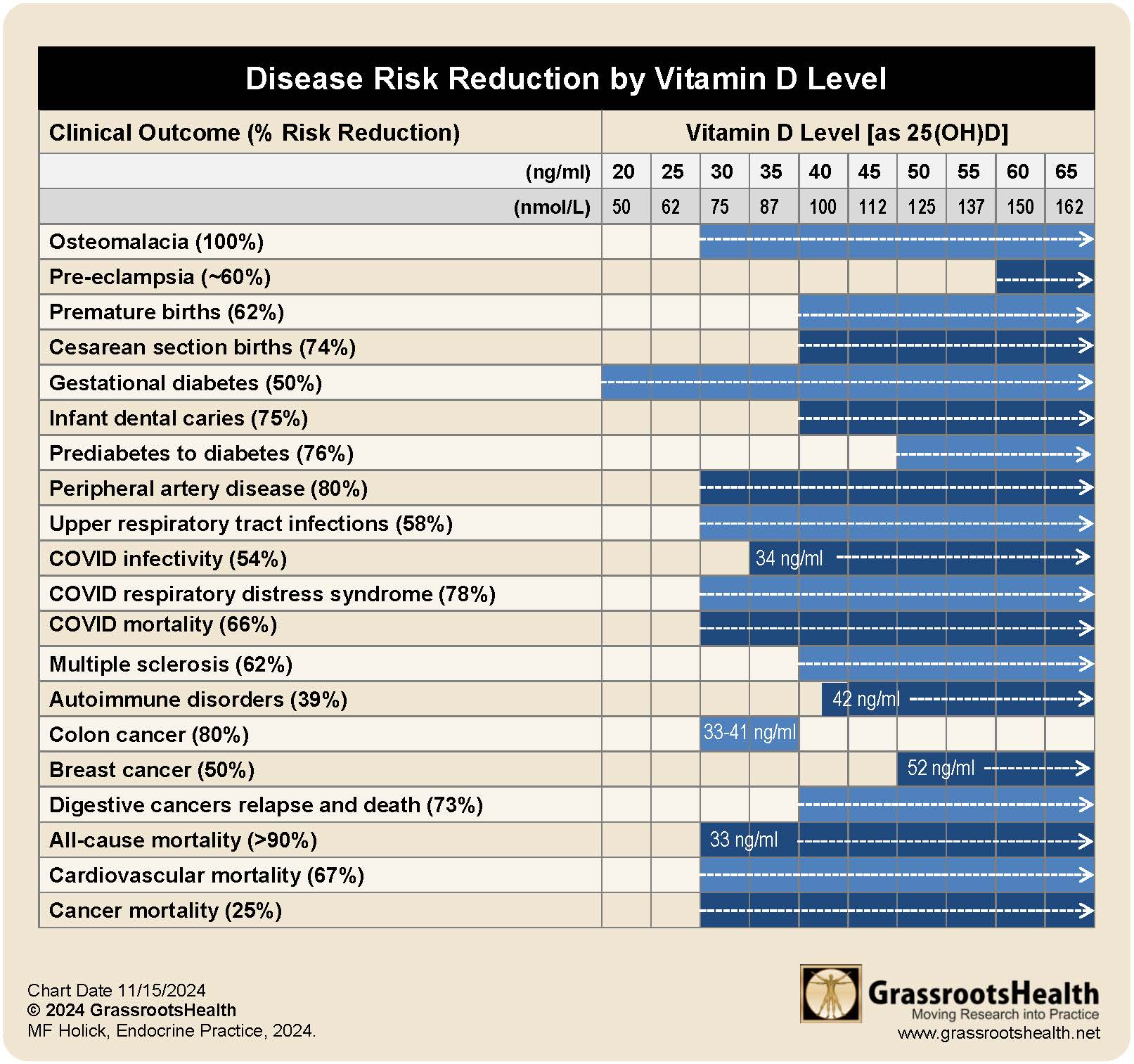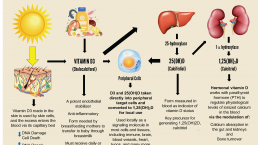Published on November 21, 2024
Dr. Michael Holick’s review article responding to the latest Endocrine Society update on vitamin D guidelines has now been published! Congratulations Dr. Holick!
Key Points
- In his latest publication, Dr. Holick offers a well-rounded review of studies, including observational and association-type studies, and very clearly demonstrates the observed benefits of achieving and maintaining vitamin D levels higher than those recommended by the latest Endocrine Society vitamin D guidelines update
- Anyone using the link provided below will be able to access the article for free before January 02, 2025, which they are welcome to read or download
 In his review, Dr. Holick, who was chairman for the 2011 Endocrine Society’s Guidelines on Vitamin D, offers his perspective on the latest ES Guidelines on Vitamin D.
In his review, Dr. Holick, who was chairman for the 2011 Endocrine Society’s Guidelines on Vitamin D, offers his perspective on the latest ES Guidelines on Vitamin D.
Although these updated guidelines relied heavily on data from randomized controlled trials (RCTs), there remains an important and irreplaceable role of observational and association studies, data which was ignored for these guidelines. Dr. Holick offers a well-rounded review of such studies and very clearly demonstrates the observed benefits of achieving and maintaining vitamin D levels of at least 30 ng/ml (75 nmol/L), optimally 50 ng/ml (125 nmol/L). Such findings are outlined in Table 1 from the paper, which are illustrated in the chart below showing decreased risk of various clinical outcomes based on achieved vitamin D level.
Anyone using the link provided below will be able to access the article for free before January 02, 2025, which they are welcome to read or download. No sign up, registration or fees are required. Check out this informational, detailed, evidence driven response, filled with research to support what optimal vitamin D levels should be for all ages and stages of life, and to lower the risk of many common health conditions.
“Revisiting Vitamin D Guidelines: A critical appraisal of the literature” by Dr. Michael Holick
Highlights of the Paper:
- Perspective of 2024 Endocrine Society’s Guidelines on Vitamin D compared to and contrasted to the 2011 Endocrine Society’s Guidelines
- Reviewed the 2024 Guidelines, Vitamin D for the Prevention of Disease: For public health and extra skeletal health
- Reviewed associations’, and other studies that support a serum concentration of 25-hydroxyvitamin D of at least 30 ng/ mL, for bone health and extra skeletal health benefits
- How much vitamin D is required to maintain a 25-hydroxyvitamin D in the preferred range of 40-60 ng/mL for maximum health.
Figure 4 is another excellent visual showing how
“Vitamin D deficiency increases risk for poor pregnancy outcomes, early childhood dental caries, increased risk for autoimmune disorders, increased risk for upper respiratory tract infections including COVID 19, advancement of prediabetes to type 2 diabetes, cardiovascular disease, neurocognitive dysfunction, mortality and accelerating mortality from deadly cancers.”

How Are Your Levels of Vitamin D and Other Important Nutrients?
Check your vitamin D, omega-3s, magnesium, and other important markers today as part of the vitamin D*action project!
Measure your:
- Vitamin D
- Magnesium PLUS Elements (including zinc, copper, selenium, mercury, cadmium and lead)
- Omega-3 Fatty Acids
- hsCRP (for Inflammation)
- HbA1c (for Blood Sugar)
- and more
Did you know that each of the above can be measured at home using a simple blood spot test? As part of our ongoing research project, you can order your home blood spot test kit to get your levels, followed by education and steps to take to help you reach your optimal target levels. Start by enrolling and ordering your kit to measure each of the above important markers, and make sure you are getting enough of each to support better health and wellbeing!
Start Here to Measure Your Levels







